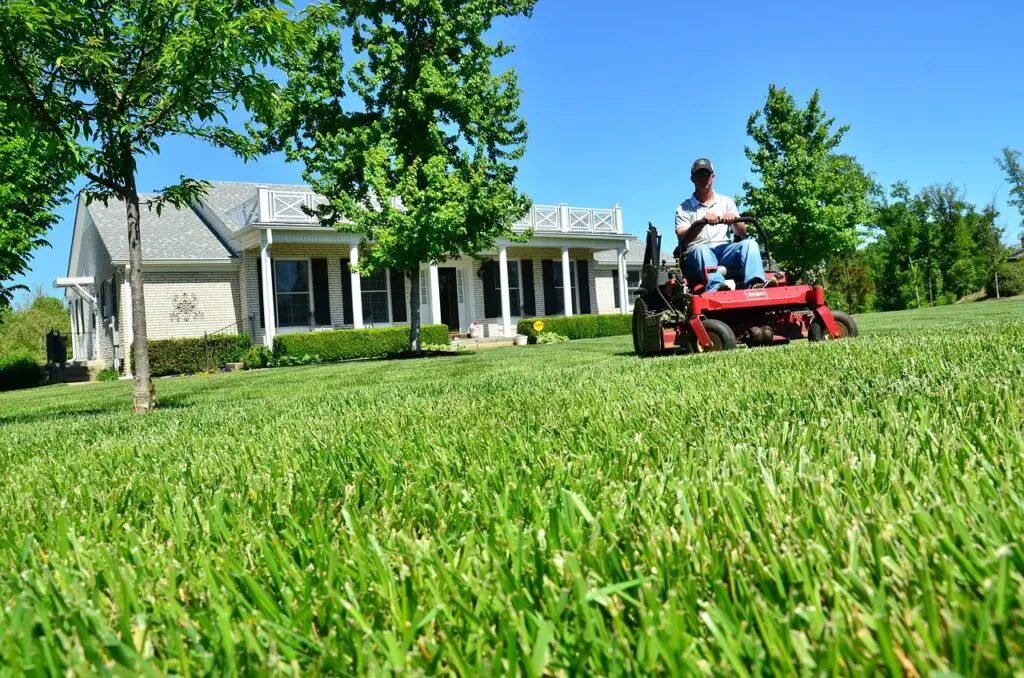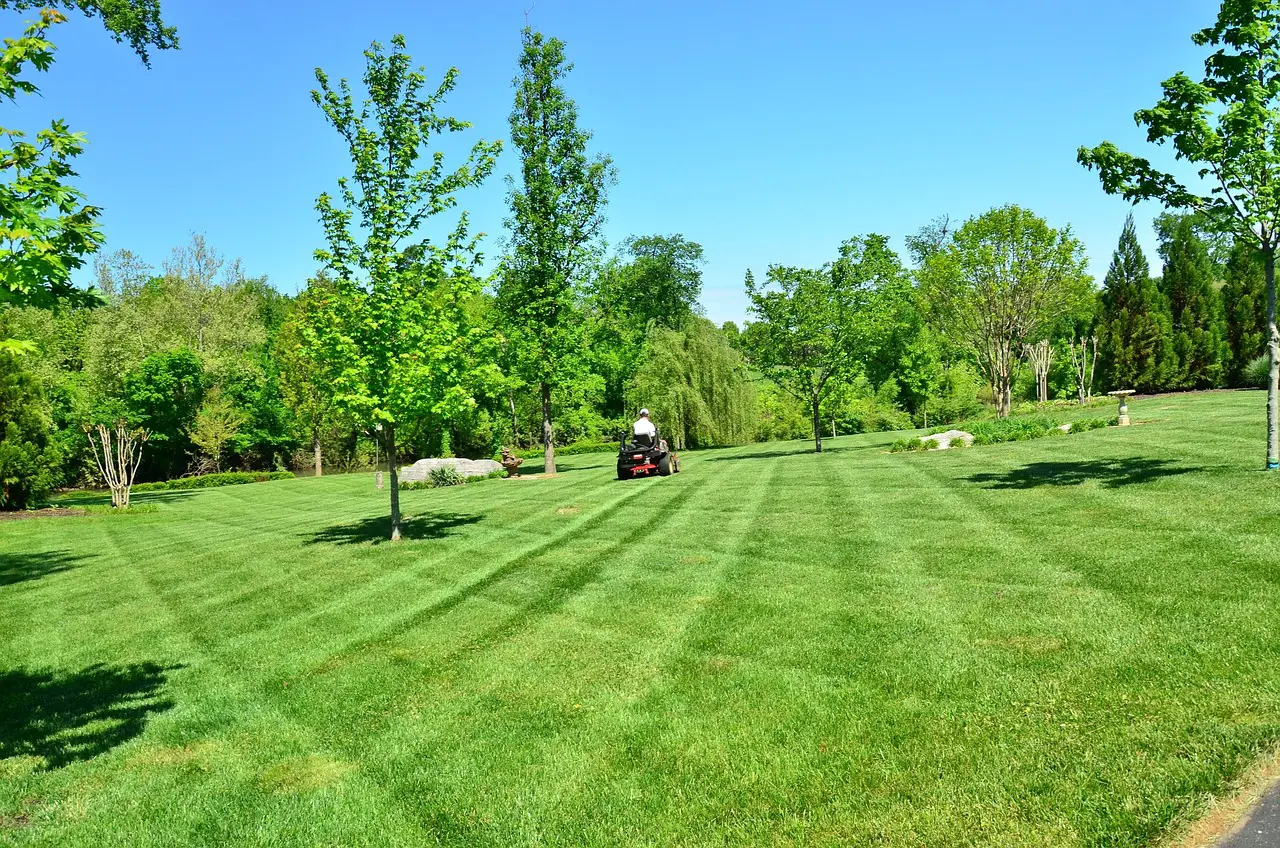A well-maintained lawn can add value to your home and enhance your outdoor living space. However, to achieve a healthy and lush green lawn, proper watering is essential. Watering your lawn is not just about ensuring that it looks good, but it also plays a vital role in maintaining the health of your grass. In this article, we’ll discuss the importance of watering in lawn care and provide you with tips for a lush green lawn.

Why Watering is Important in Lawn Care
Water is an essential element for the growth and development of grass. Without water, grass cannot perform essential functions such as photosynthesis, respiration, and transpiration. Water also helps the grass to maintain its shape and rigidity, which allows it to resist traffic and other external stresses. When grass is not adequately watered, it can become dry, brown, and eventually die.
Overwatering your lawn can be just as harmful as underwatering it. Too much water can cause root rot, which can weaken the grass and make it more susceptible to disease and pests. Additionally, overwatering can lead to the leaching of essential nutrients from the soil, which can cause nutrient deficiencies.
How Often Should You Water Your Lawn
The frequency of watering your lawn depends on several factors, such as the climate, soil type, grass species, and age of your lawn. In general, it’s recommended to water your lawn deeply and infrequently, rather than frequent light watering. Deep watering encourages the roots to grow deeper, making the grass more drought-resistant.
To determine how often you should water your lawn, perform a simple soil moisture test. Push a screwdriver or a soil probe into the ground. If it goes into the soil easily, your lawn has enough moisture. If it is difficult to push in, it’s time to water your lawn. Another method is to check if the grass blades are curling or turning a dull grayish-blue color, which indicates that the lawn needs water.
Best Time to Water Your Lawn
The best time to water your lawn is early in the morning, between 6:00 AM and 10:00 AM. At this time, the air is cooler and less windy, which reduces water loss due to evaporation. Watering your lawn in the evening can lead to prolonged periods of moisture on the grass blades, which can encourage the growth of fungal diseases.
Watering Techniques for a Lush Green Lawn
- Use a Sprinkler System
Sprinkler systems are an efficient and convenient way to water your lawn. They distribute water evenly over a large area, which ensures that the grass receives adequate moisture. However, make sure to set your sprinkler system to water your lawn deeply and infrequently. If you water your lawn too often, it can lead to shallow root growth, which makes the grass more susceptible to drought.
- Water by Hand
Watering by hand is an excellent way to water small areas of your lawn or spot-treat dry areas. It allows you to control the amount of water applied to your lawn and ensure that it reaches the root zone. Use a watering can or a hose with a spray nozzle to water your lawn. Apply water slowly to avoid runoff and ensure that the water penetrates deep into the soil.
- Consider Using Drought-Tolerant Grass
If you live in a dry region, consider using drought-tolerant grass species. These grasses require less water and can withstand prolonged periods of drought. Some popular drought-tolerant grasses include Bermuda grass, zoysia grass, and buffalo grass.
Watering Frequency
- How often you should water your lawn depends on several factors, such as the type of grass, soil type, weather, and time of year. Generally, grass needs at least 1-2 inches of water per week, including rainfall. However, it’s important to avoid overwatering, as this can lead to fungal diseases and shallow root growth.
- To determine when to water your lawn, you can perform the screwdriver test. Simply push a screwdriver into the soil. If it goes in easily, the soil is moist enough. If it’s hard to push in, the soil is too dry, and you should water your lawn.
- Watering Time The best time to water your lawn is early in the morning, around 4-6 am, when the air is cool and there’s less wind. Watering during the day can result in evaporation while watering at night can cause prolonged leaf wetness, which can promote fungal growth.
- Watering Techniques To ensure that your lawn is getting enough water, you can use different watering techniques, such as sprinklers, soaker hoses, or drip irrigation. Sprinklers are ideal for larger lawns, while soaker hoses and drip irrigation systems are better for smaller areas and slopes.
- When using sprinklers, make sure to position them correctly, so that the water reaches the grass and not the pavement or sidewalk. You can also adjust the sprinkler heads to control the water flow and direction.
- Soaker hoses and drip irrigation systems are more efficient and can save water, as they deliver the water directly to the soil and roots. However, they require more maintenance and may be more expensive to install.

Conclusion
In conclusion, watering is a critical aspect of lawn care that can affect the health and appearance of your grass. By following these tips, you can ensure that your lawn is getting the right amount of water at the right time and using the most efficient watering techniques. Remember to also consider factors such as soil type, grass type, and weather conditions, as they can affect your watering schedule. With proper watering and maintenance, your lawn can thrive and be the envy of the neighborhood.

